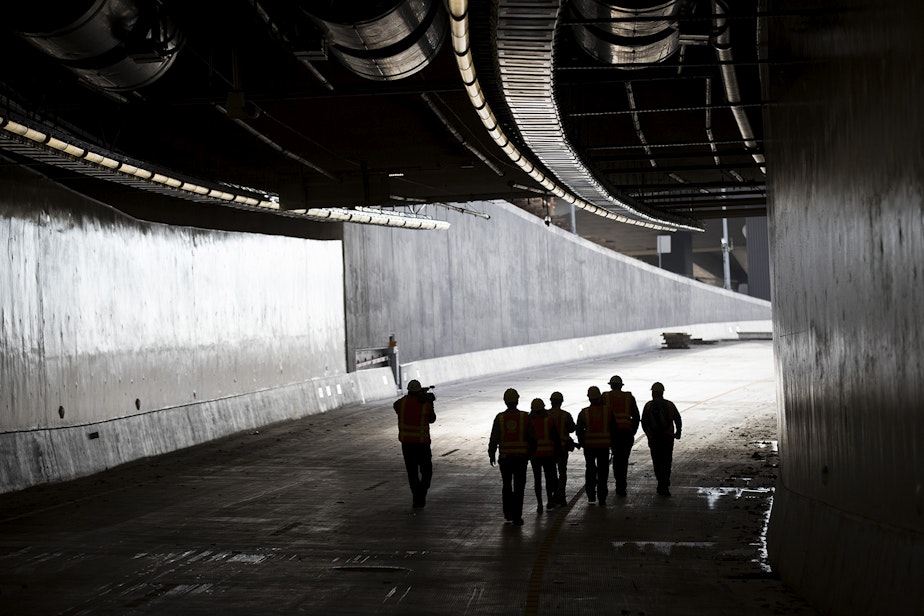This is how Seattle's new tunnel compares with others, in dollars and delays

The TL;DR version of this story: Other places build them faster, but for more money.
Yay?
Seattle's deep-bore waterfront tunnel is scheduled to open in early February after years of delays and millions of dollars in cost overruns.
All that "Seattle process" led listener Andrew Bull to ask KUOW: Do other places do a better job with tunnel mega-projects?
Let's go back to the beginning, to why we started talking about the tunnel in the first place: the 2001 Nisqually earthquake.
The earthquake created cracks in the Alaskan Way Viaduct and slumped into the soil in places — prompting the state to declare the structure unsafe.
The next steps took years of process, with environmental groups and business leaders at odds about what to do.
Sponsored

Replace the viaduct? Build a tunnel? Or go for something less car-centric?
As a result, money was not officially allocated until eight years after the quake, in 2009. At that time, planners said it would take six years to complete the job.
That was ... optimistic. There were delays, like when Bertha, the deep bore drill, got stuck. That took a couple years to fix.
The project is now on track to open after nearly 10 years, with more than a 50 percent schedule overrun.
That’s twice as bad as the average for tunnel mega-projects schedule overruns, according to data gathered by Bent Flyvbjerg, a business school professor at Oxford who studies mega-projects.

Sponsored
Don't mistake that for twice as expensive, though: The new tunnel is currently forecast to be 7 percent over budget; other mega-tunnel projects are on average 37 percent over budget.
There's an asterisk to that 7 percent figure: Contractor lawsuits. If successful, they could drive up the final price tag by hundreds of millions of dollars.




